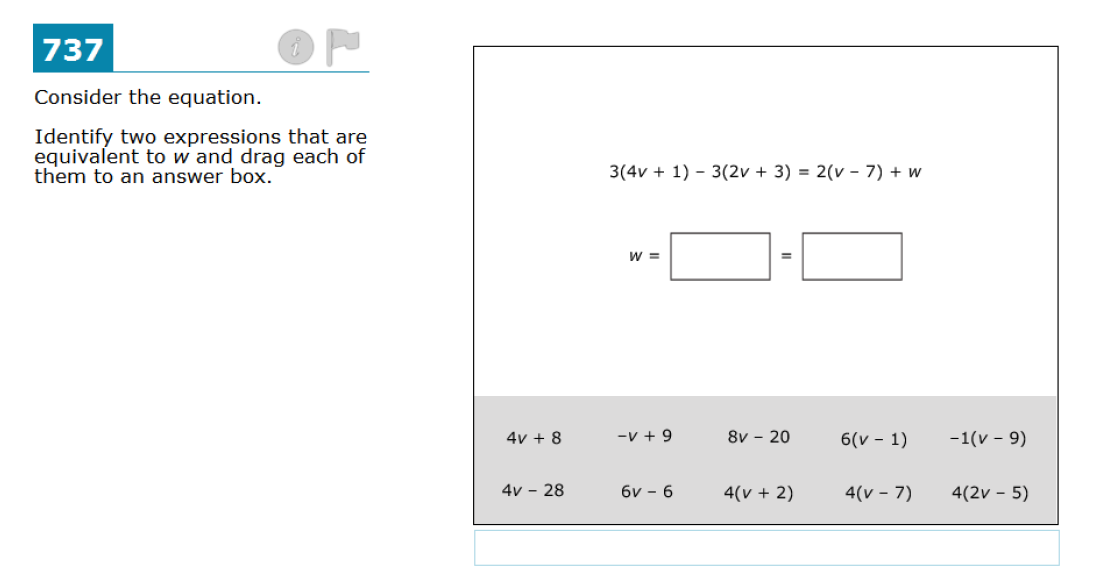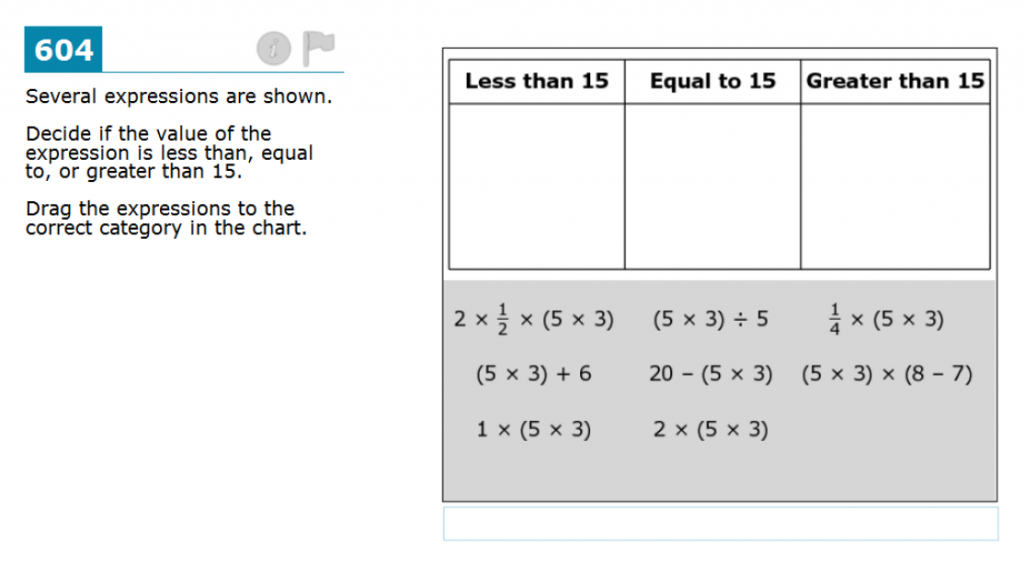Each state that has adopted Common Core State Standards will select an assessment consortium to assess how children are progressing in school. The two options most widely chosen at this point are: Smarter Balanced and PARCC. Each assessment consortium has provided practice test questions and today we will review one of these questions and discuss its potential impact on classroom instruction.
Below is an assessment question from Smarter Balanced grade 5. Smarter Balanced uses two types of assessment questions: Selected Response and Constructed Response.
- Selected Response requires the students to select one or more correct answers.
- Constructed Response requires the students to create their own answer.
Fifth Grade Evaluate Expressions
Common Core Standards Assessed
5.OA.1 Use parentheses, brackets, or braces in numerical expressions, and evaluate expressions with these symbols.
5.NF.5 Interpret multiplication as scaling (resizing), by:
a. Comparing the size of a product to the size of one factor on the basis of the size of the other factor, without performing the indicated multiplication.
This item assesses two fifth-grade standards. To correctly answer this item, students must be able to evaluate numerical expressions with parentheses and describe the size of a product based on the factors.
Solution
[hr]
From Smarter Balanced Scoring Guide
Full-credit response (2 points) includes:
- 20 – (5 × 3), (5 × 3) ÷ 5, and ¼ × (5 × 3) in the “less than 15” column
AND - 2 × ½ × (5 × 3), (5 × 3) × (8 – 7) and 1 × (5 × 3) in the “Equal to 15” column
AND - (5 × 3) + 6 and 2 × (5 × 3) in the “Greater than 15” column
For partial credit (1 point), the student correctly sorts at least four expressions.[hr]
For full credit, students must correctly place all expressions in their correct columns. For partial credit, students correctly place four of the eight expressions in their correct columns.
What do we learn from this item?
This item requires a basic understanding of evaluating expressions within parentheses. Students must recognize that the expression (5 × 3), because it is in parentheses, will be evaluated first. For the purposes of this item, students recognize that the expression (5 × 3) is no different than the number 15.
Students do not need to calculate each of the expressions to answer this item. Instead, students can recognize that all expressions contain the expression 5 × 3. From there, students can focus their attention on the operation being performed, and what result that will have on the number 15.
Example
For example, with the expression (5 × 3) ¸ 5, students should recognize that dividing by a whole number will decrease the expression (5 × 3), resulting in a value less than 15.
How is this concept assessed in other grades?
Throughout all grades, the Common Core State Standards stress the importance of viewing expressions as having a value, rather than simply a problem to solve and simplify. As noted by the CCSS Math Progressions document, in middle school, students must “interpret expressions, not just evaluate them,” viewing expressions as “not just calculation recipes but as entities in their own right.” This conceptual view of expressions will prepare students to manipulate algebraic expressions and expressions in functions.
 Example
Example
For example, with the expression (5 × 3) ¸ 5, students should recognize that dividing by a whole number will decrease the expression (5 × 3), resulting in a value less than 15.
Suggestions for classroom instruction
Students need to be taught comparing products “without performing the indicated multiplication” as the standard (5.NF.5) states. Through practice, students can begin to understand the relationship between an expression and its value, recognizing that the two are different ways of representing the same value, as is required in this assessment item.
Citations
Progressions for the Common Core State Standards in Mathematics (OA)
Smarter Balanced Practice Assessments





